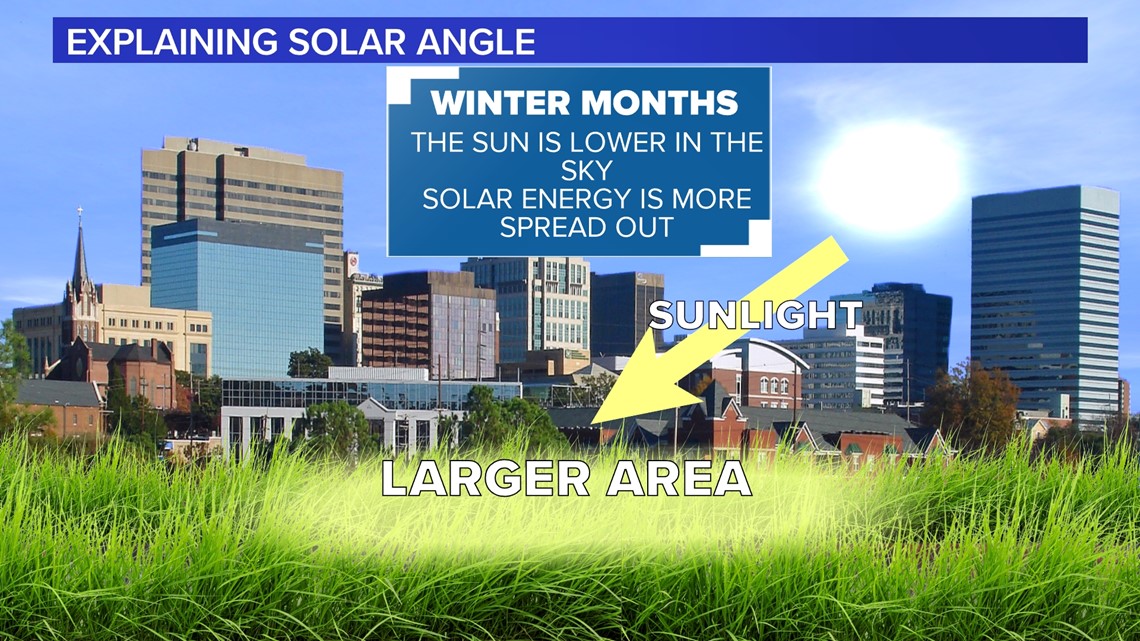COLUMBIA, S.C. — The month of January is historically speaking, our coldest month the year. Let's go into why this is and also talk about how this could and has (in the past) resulted in winter weather here across the Midlands.
Looking at the numbers, January slightly edges out December as the coldest month here in Columbia with an average temperature of 45.7 degrees. As for this year, it won't be hard to be colder than December which finished 7 degrees above normal.


Narrowing things down, the next 3 weeks (from mid to late January) have been traditionally cold for the region with some of our lowest lows and highs recorded during this period. Plenty of single digit lows and highs in the 20s have been recorded from January 9th through the 31st. One interesting thing to note, is we didn't have any extreme cold temperatures recently on this list.
RELATED: Local Forecast


So, we know it gets cold in January but why is this actually the case?
The Winter Solstice begins in late December, this is the day in which we see the least amount of daylight for the year. Here in Columbia that comes to around 9 hours and 54 minutes. As we get towards the end of January we are quickly getting closer to an hour more sunlight than our shortest day. So, with more sunlight how could we be expecting the coldest period of the year?


The answer is the sun's angle. We all learned about the seasons in Elementary school and about the tilt of the Earth but, here on the surface we see this change in the sky through the solar angle.
During the Summer months, the sun goes much higher in the sky so, not only do we get more time in the day but the sunlight itself is more direct which aides in helping to heat us up.
During the winter months, the solar angle is lower which means we are taking the same amount of sunlight and spreading it over a larger area. This lower concentration of energy means the sun is "weaker" this time of the year even though we are gaining daylight. These two things balance each other out enough during this time of the year that we continue to see increasing chances of colder weather through about early February.


Now that the cold air is explained let's talk about how we can get winter weather out of this! The biggest thing that needs to work out is timing here in the Carolinas if we hope to see some snow.
What happens a lot is we get the cold air that we need but, it is still behind an approaching low. In this scenario we typically end up with just a cold rain across the Midlands.


If we want to see some flakes flying here around the Midlands we need the cold air to be in place over the Southeast. This is not hard to get but of course, the timing of getting it in place right ahead of an approaching low pressure system is the tricky party. When this actually happens though that when we get our best chances for wintry weather.



